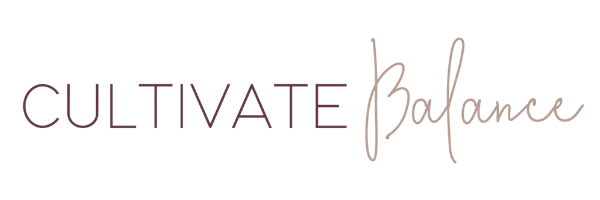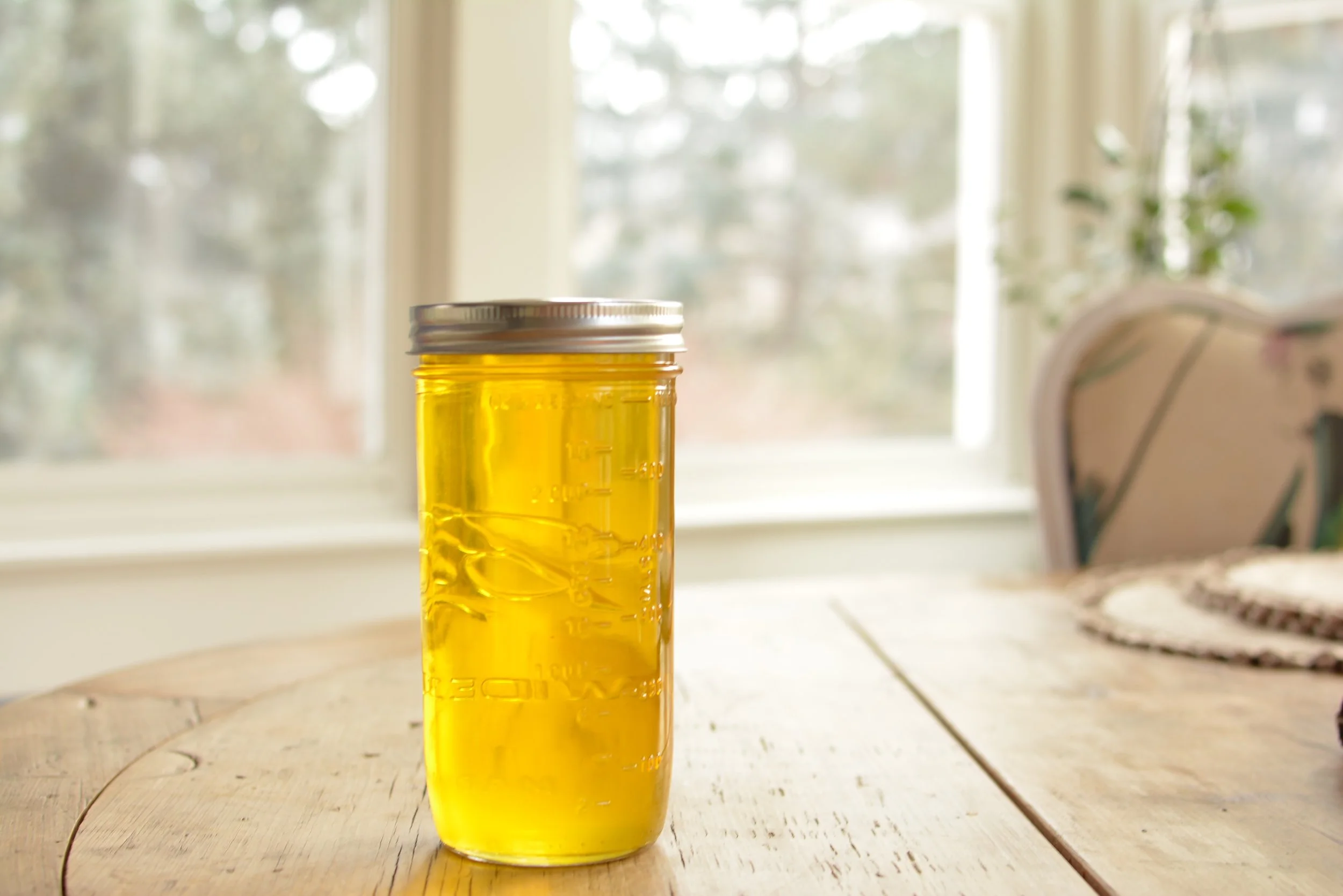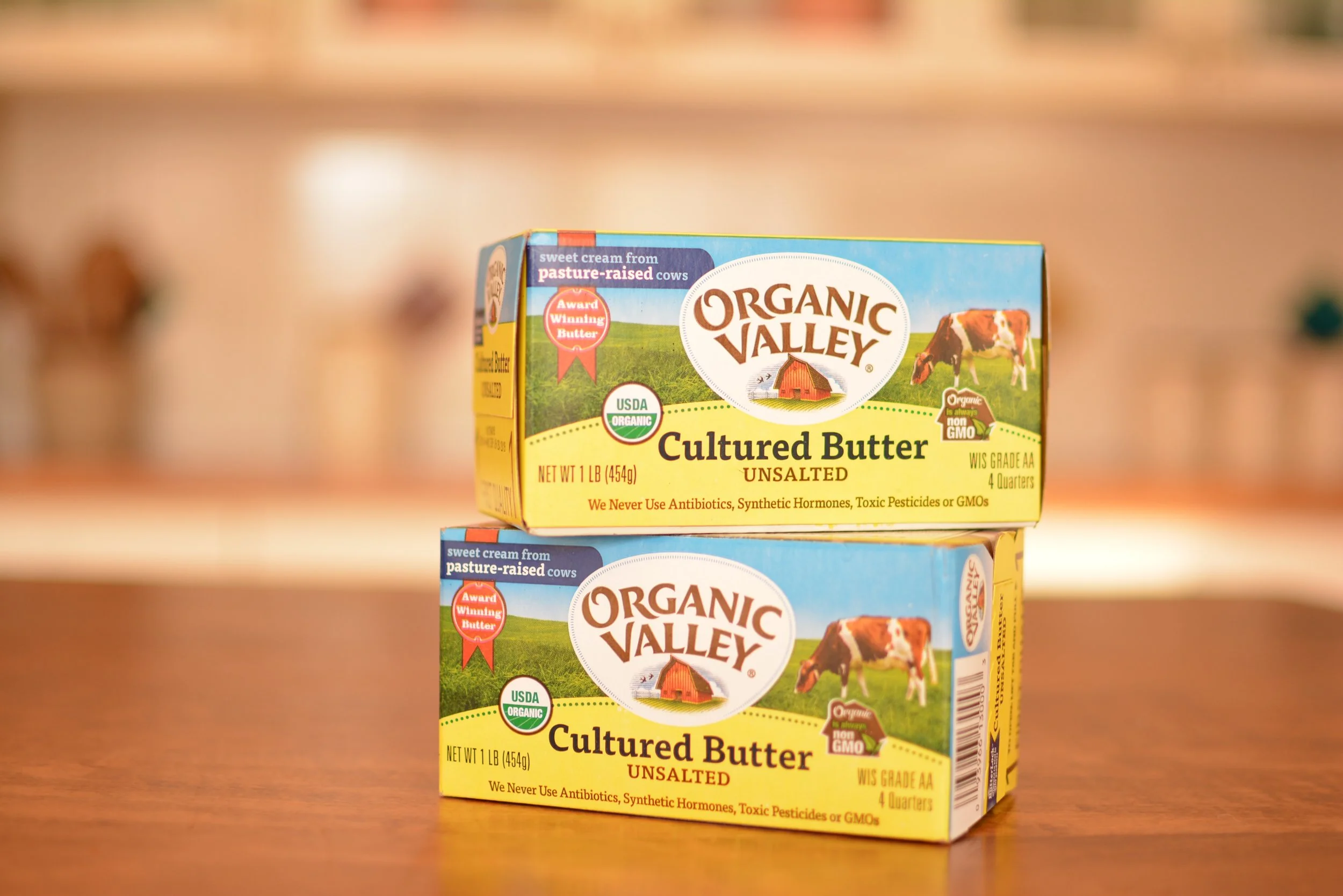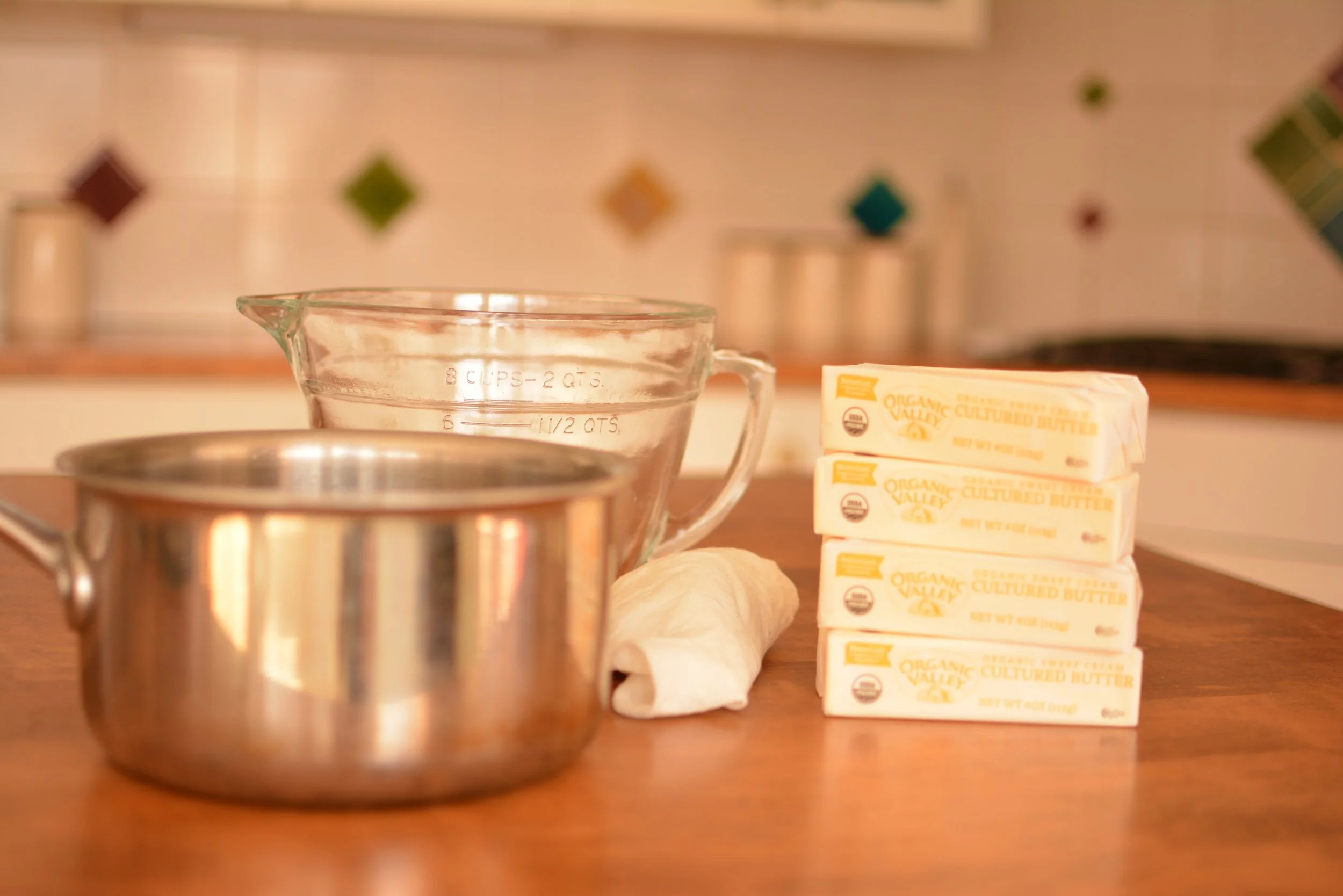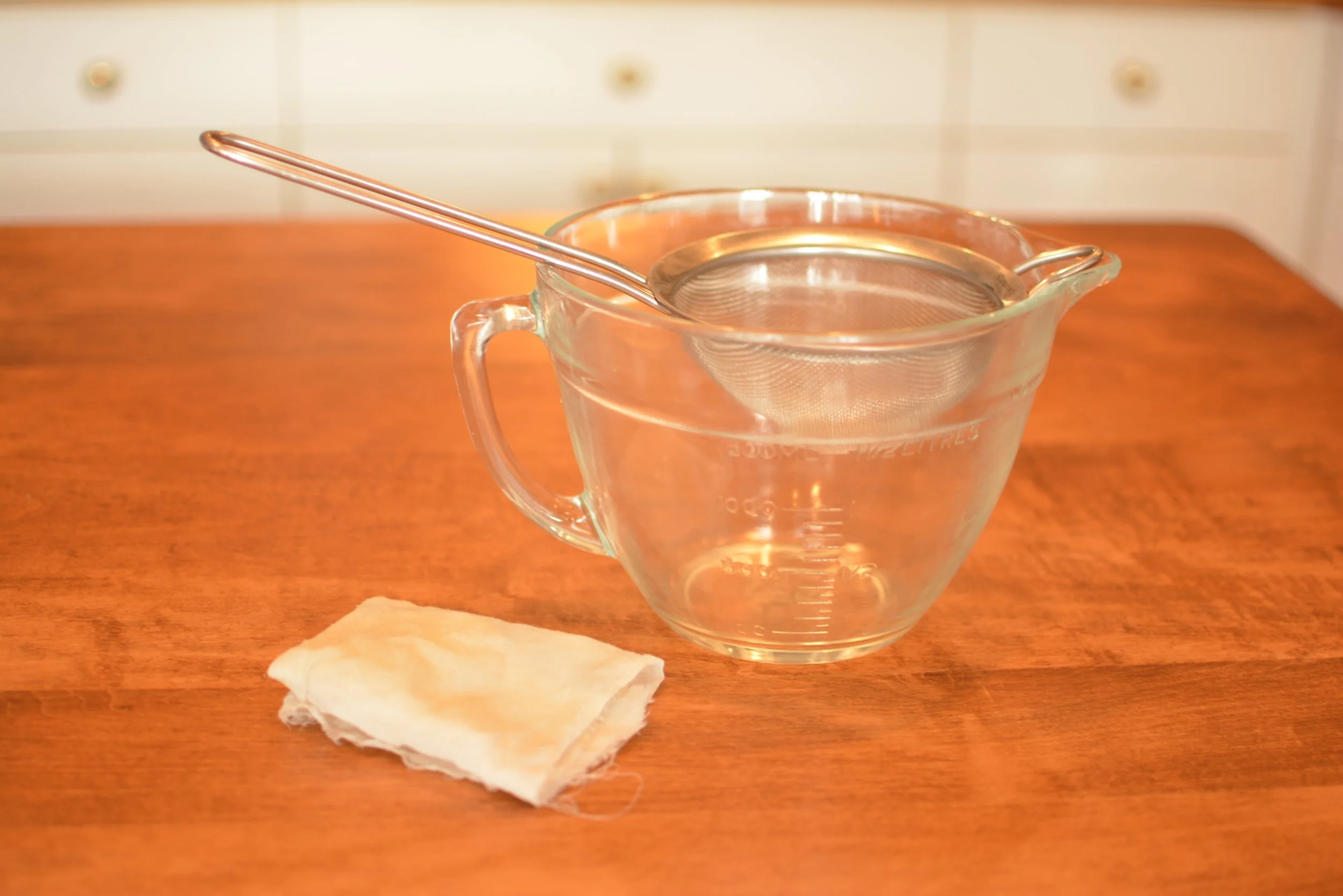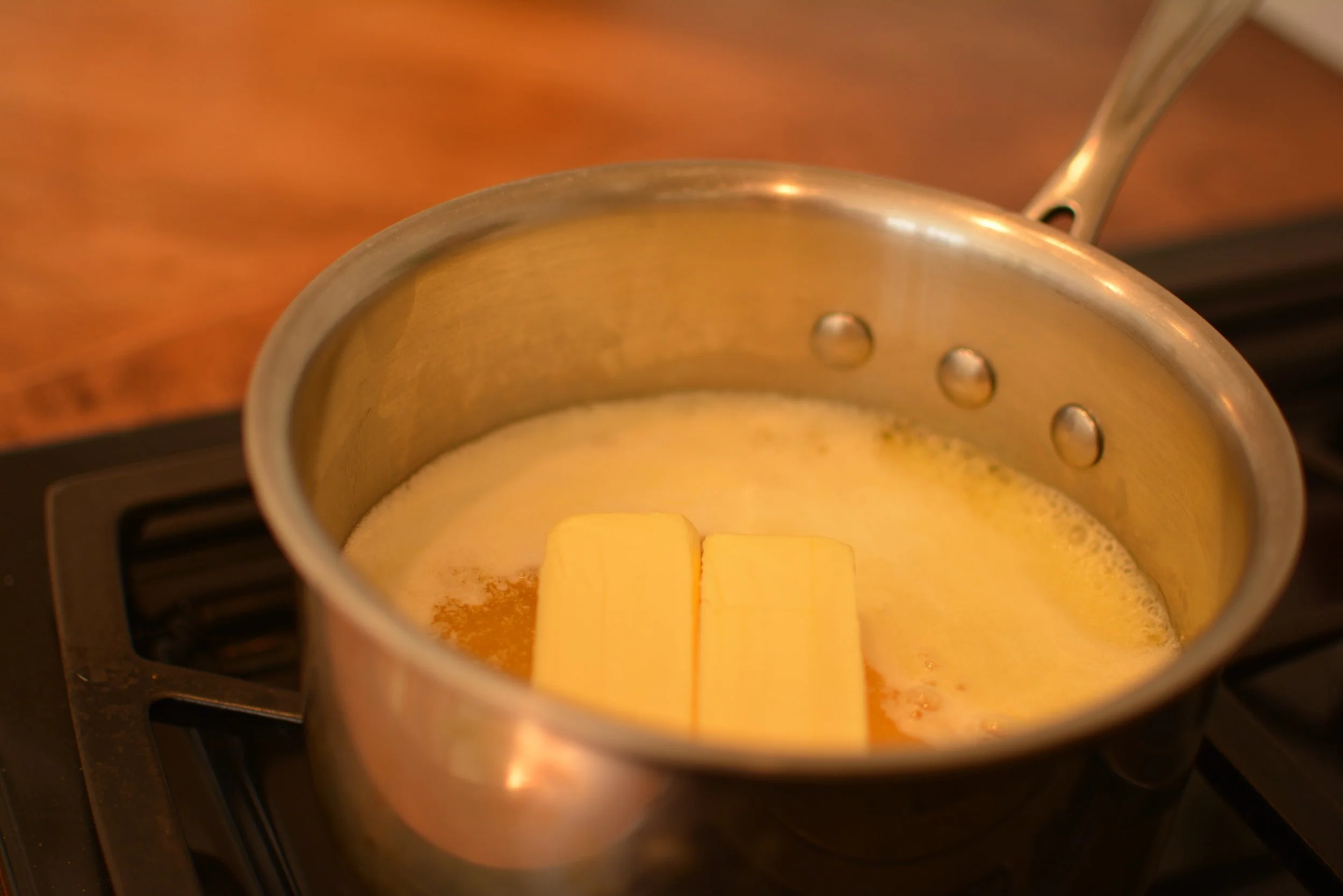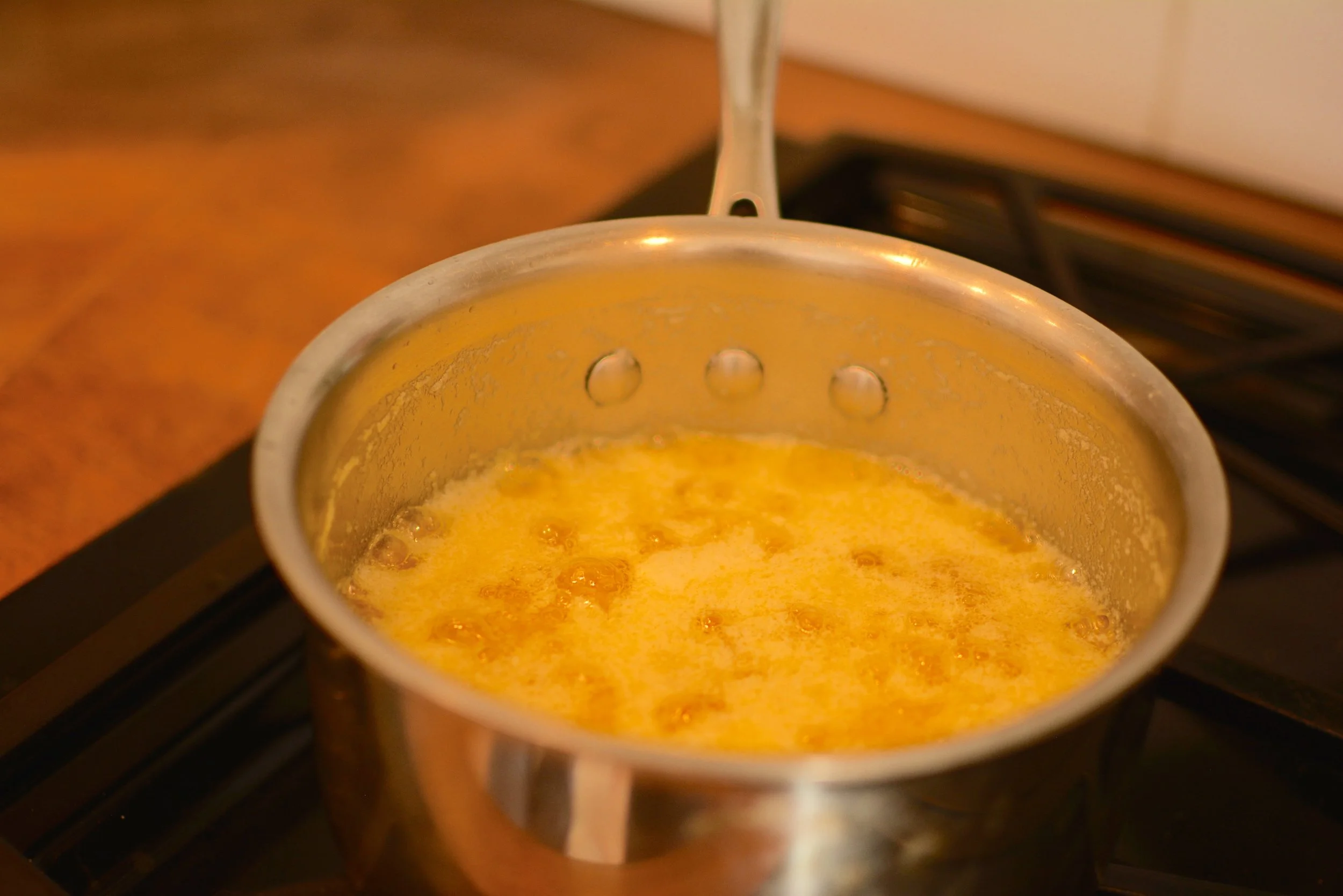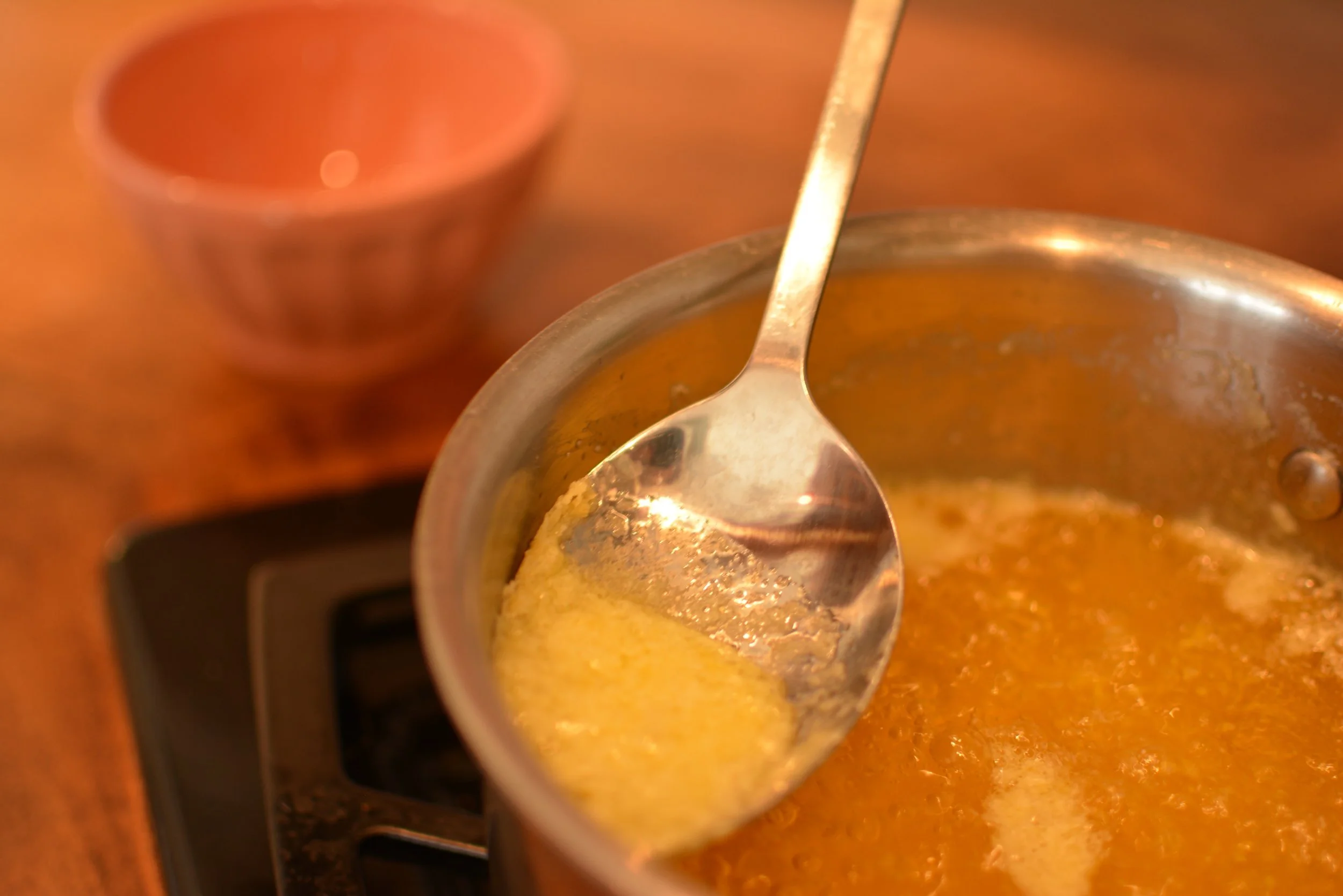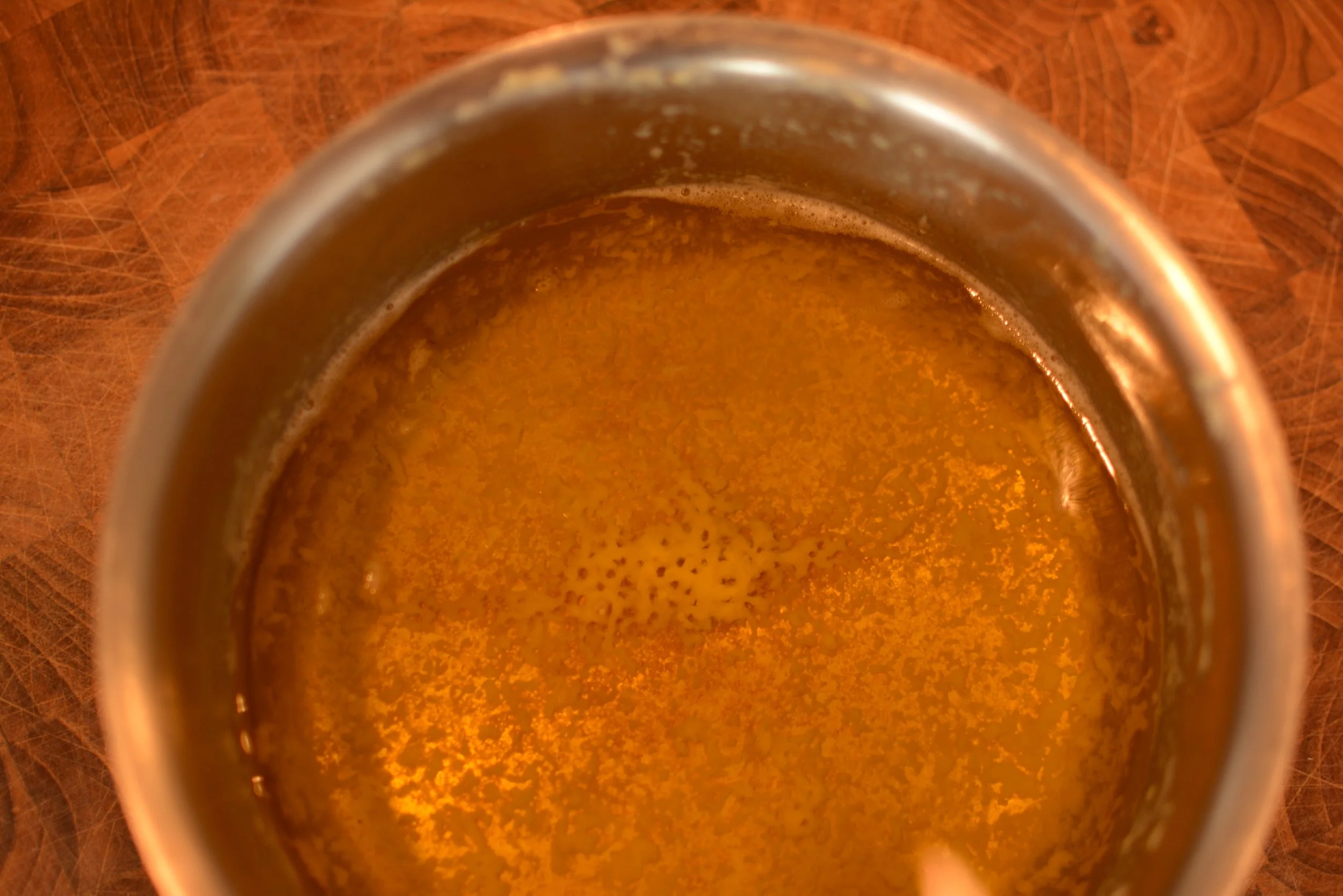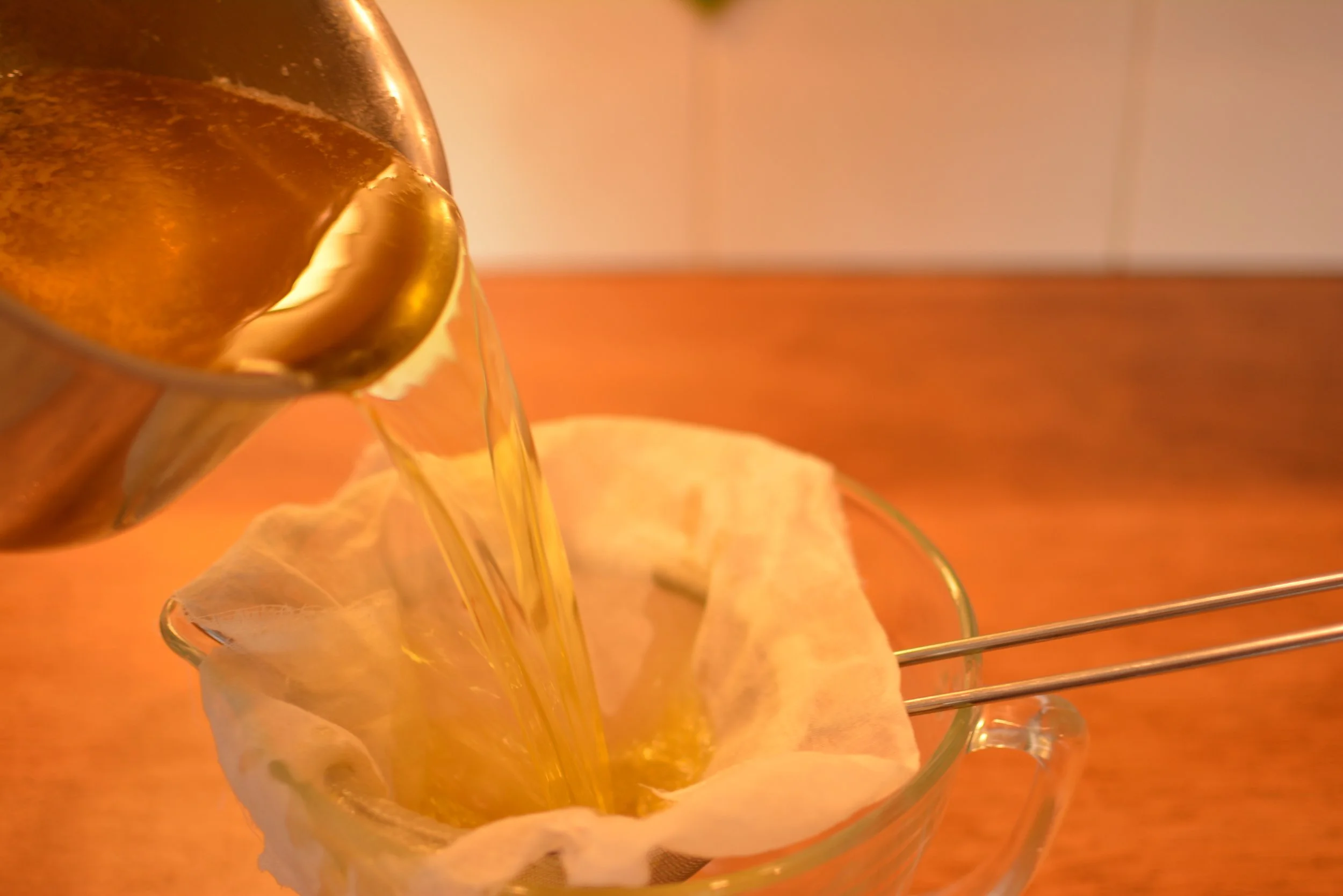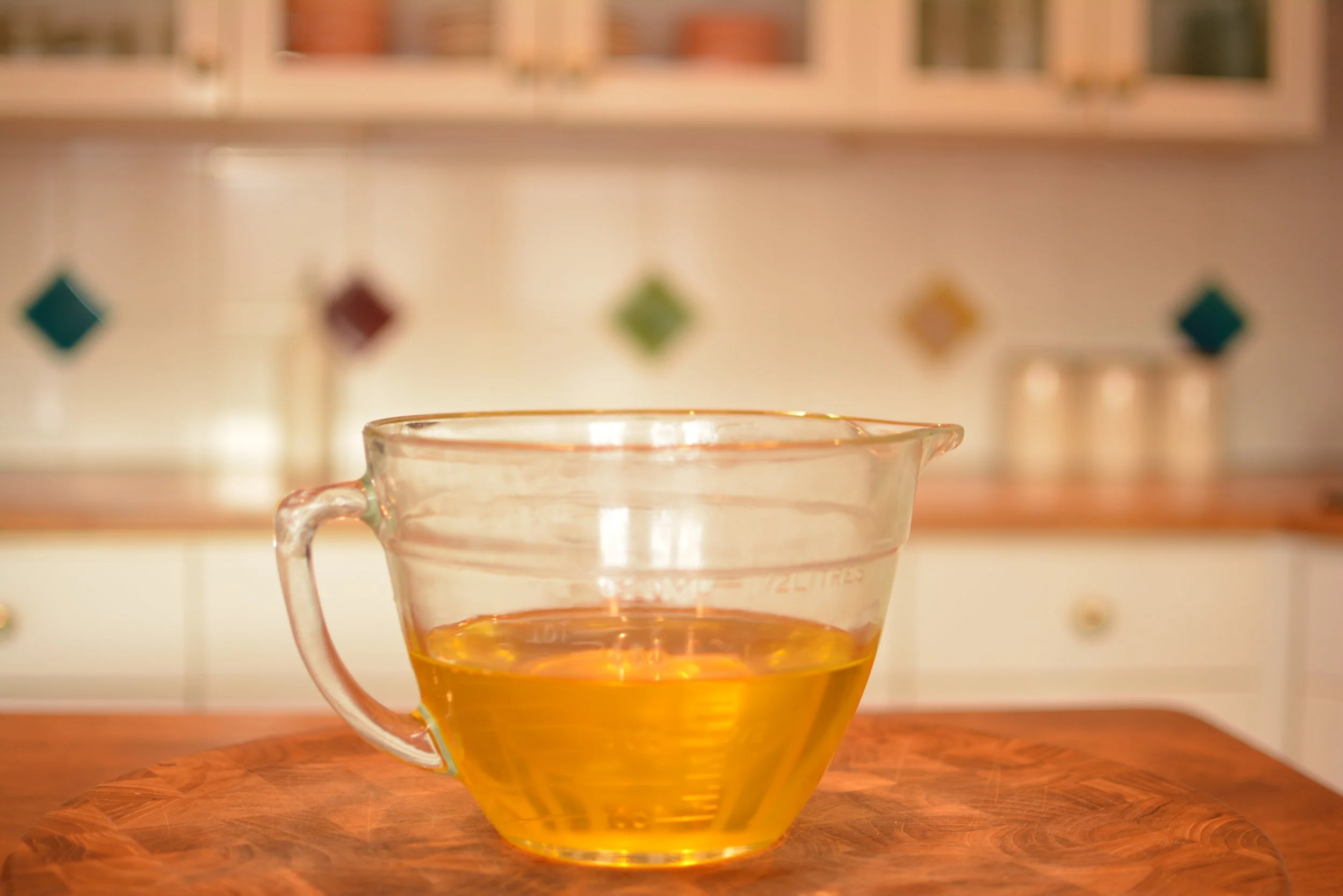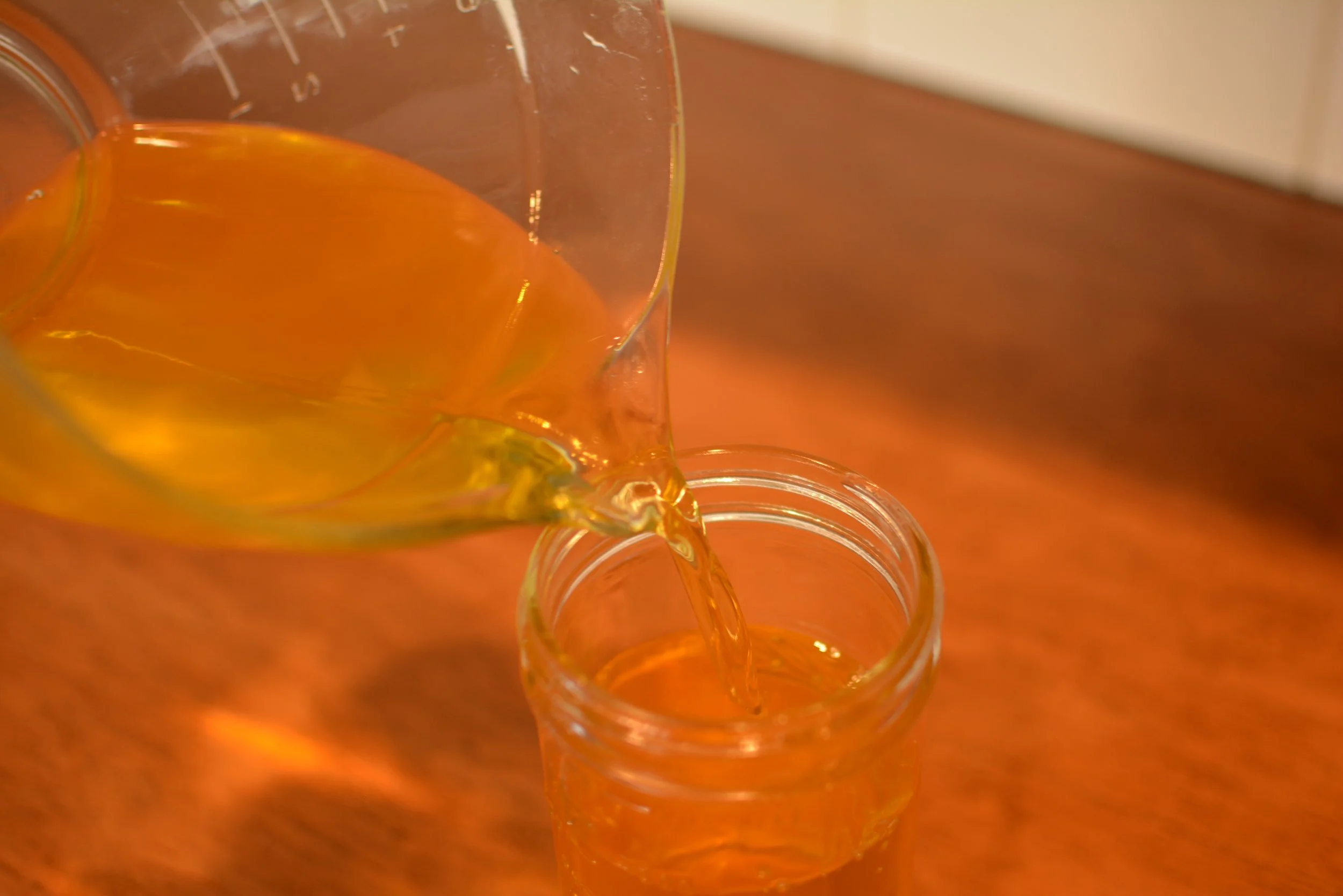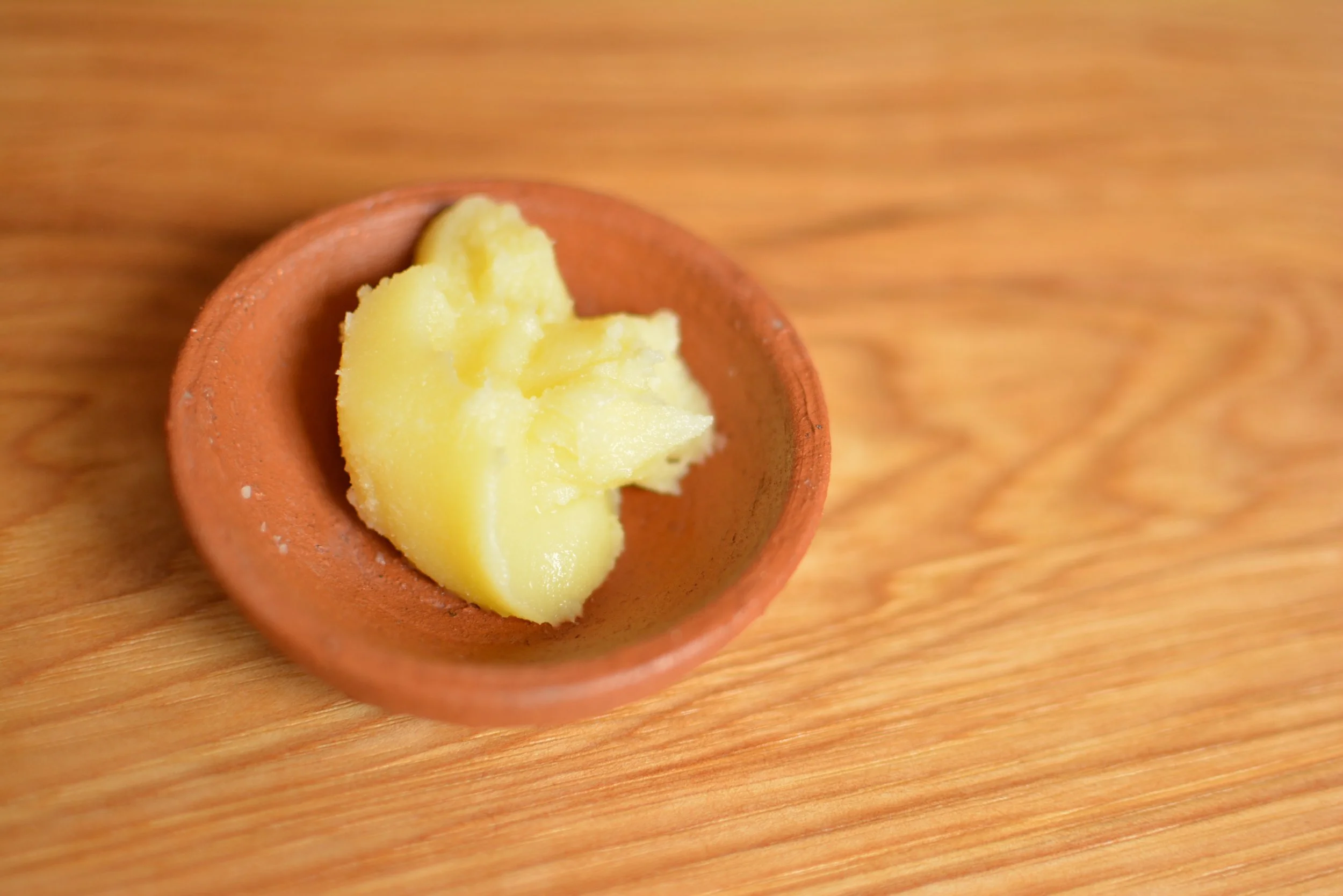In addition to tasting like liquid sunshine, ghee is arguably the single most revered food within the Ayurvedic paradigm. Ghee is the Ayurvedic take on clarified butter.
Ghee is considered to be one of the most sacred foods. It is easily absorbed into the body, and as a result, can actually help the nourishment from other foods and spices go deeper into the tissues. Ghee is one of the very best foods for supporting longevity. Ghee that has been cultured (which is what we recommend), is especially nourishing to the gut microbiome because it is a high source of butyric acid. This means that ghee can actually ward off bad bacteria, help seal a leaky gut, and naturally boost stem cell production. Because the milk solids (whey, casein, lactose) are removed in the process, ghee is far more easily digestible than regular butter. It also has a higher smoke point than coconut oil, and can be heated up to 485 degrees without releasing harmful free radicals. Ghee does not need to be refrigerated. If possible, seek out grass-fed ghee to receive enhanced benefits from the significant amount CLA present. CLA supports a healthy metabolism.
A Sacred Food
Ghee is one of the five gifts of the cow, a sacred animal in India. From milk, yoghurt can be made, from yogurt butter, from butter ghee, from ghee nothing, hence ghee, which is not perishable like other dairy products, represents pure consciousness.
Ghee is mentioned in several ancient Vedic texts, where it is referred to as the “Tongue of the Gods” and the “Navel of Immortality”. In Hindu mythology, ghee is tied to one of the most fundamental creation stories. It is also considered the food of Agni, the god of fire, so it’s used as a sacrifice in yagnas, or Vedic fire ceremonies to help carry prayers up to the heavens.
It is used for culinary, medicinal and spiritual purposes and is believed to be tridoshic (in moderation), which means it is balancing to vata, pitta and kapha. Because the milk solids (whey, casein, lactose) are removed in the process, ghee is far more easily digestible than regular butter. It also has a higher smoke point than coconut oil, and can be heated up to 485 degrees without releasing harmful free radicals.
Benefits
Ghee is one of the most widely mentioned medicines in the ancient Ayurvedic texts. Here are just a few of the ways it is touted as beneficial for our health:
Relieves inflammation or irritation
Supports digestion
Improves memory and intelligence
Improves complexion
Enhances beauty
Increases luster
Improves voice
Increases ojas (immunity, resiliency, libido)
Improves eyesight
Strengthens and rejuvenates
Detoxifies
Enhances sperm production
Increases duration of life
Ready to make some ghee at home?
This might take you a couple of tries to get right, but trust us, it will be worth it when you do! Homemade ghee is WAY more delicious than store bought. You can do it!
If you’d like a visual, you can watch Sierra guide you through how to make ghee on our IGTV!
Ingredients
2 pounds Organic Valley *Cultured Unsalted Butter // yields ~ 4 cups ghee
*Cultured butter is most similar to the butter that would be used in ancient times, and is often more digestible.
Materials
2 packages cultured unsalted butter
Medium size heavy-bottom saucepan
Small to medium wire strainer/sieve
Cheese cloth or muslin cloth, about 5x5”
1-quart jar for storage
Method
Remove butter from packaging (8 sticks in total) and place in heavy-bottom saucepan.
Heat the butter over medium heat until fully melted.
Turn the heat down to medium-low, gently allowing the butter to simmer. It is normal for the butter to bubble and pop. If you notice a rapidly rising foam that looks like it may spill over the edge, turn the burner down on low for a few minutes.
As the butter cooks, the milk solids will separate from the butter fat (ghee) and sink to the bottom of the pan. Every so often, you can skim the foam off the top into a separate bowl to be disposed of. This step is not required but will make the straining process easier.
The foam on top will get thinner and thinner, as the milk fat solidifies and sinks. At this point, the oil will still be a bit cloudy – wait until it is completely clear. Avoid stirring to encourage the milk solids to separate and sink.
The oil will gradually become more clear golden until you can see straight to the milk solids at the bottom.
You’ll know the ghee is done when the milk solids start to brown ever-so-slightly, the ghee becomes almost translucent, and the bubbling sounds become quiet. Be very careful to watch the ghee closely towards the end of the cooking process as it has a tendency to over-cook and burn easily.
Once done, remove from heat and strain out the milk solids by pouring the ghee through a fine metal strainer lined with cheese cloth.
Ghee will harden at room temperature, so it is easily spread or dolloped.
Check out the images below for the play by play!
How to Use Your Ghee
Cook with it! – replace cooking oils
Spread on your toast – replace butter or butter alternatives
Use as the oil in salves, or just use right on dry skin
Apply over eyelids and/or under the eyes
For constipation take a teaspoon of ghee with some cardamom mixed in
Cleanse with it during The Reset for Resilience (an Ayurvedic cleanse for body and mind)
Want more Ayurveda?
Take the Basic Balance Challenge, our FREE w e l l n e s s mini-course that shows you how to enhance your digestion, mood and vitality in just four very simple daily practices (that will take you around 30 minutes to learn). Then check out The Art of Ayurveda: Ancient Secrets for Self Care when you’re ready to live your deepest wellness.
